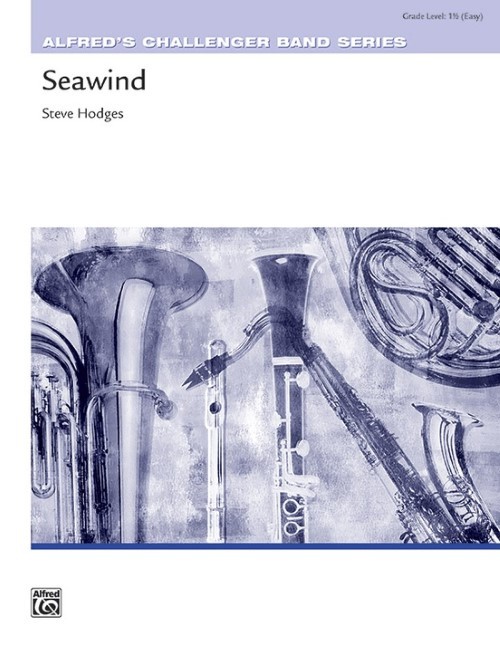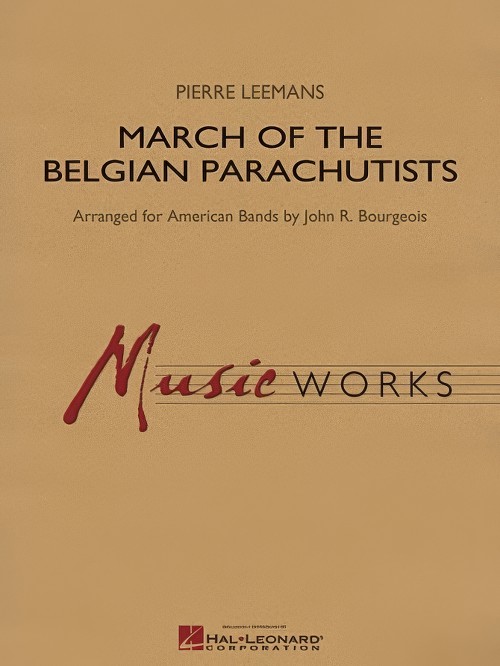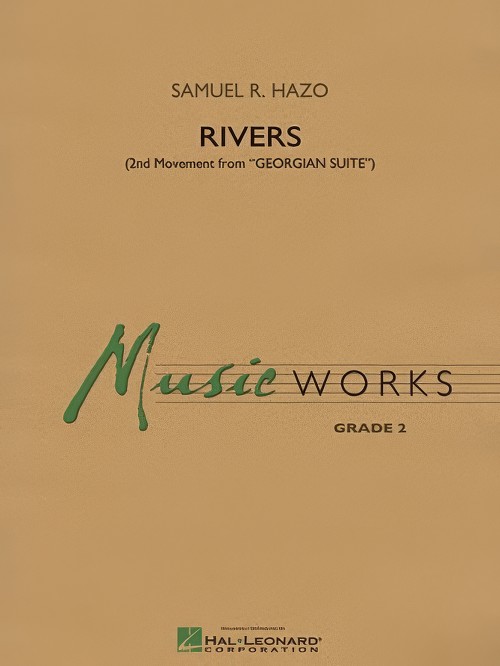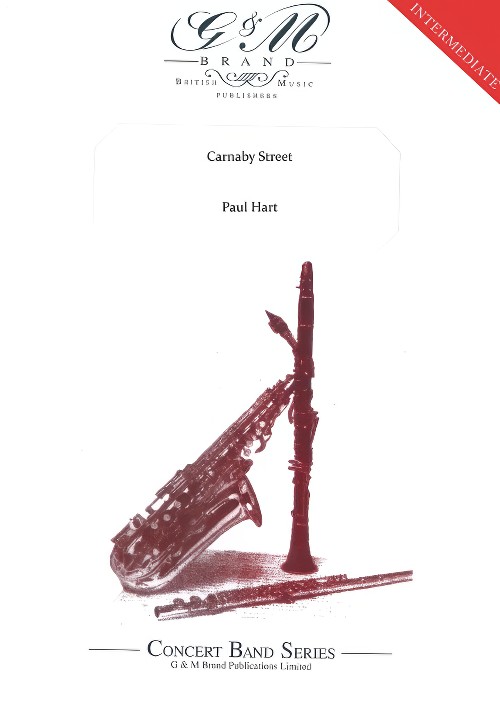Results
-
 £60.99
£60.99The 3-Minute Nutcracker - Pyotr Ilyich Tchaikovsky
Here are all your favorite Nutcracker themes rolled into a clever and lighthearted medley. For added excitement, appoint an official time keeper and use a big hourglass-type egg timer or a projected digital stopwatch so theaudience can track your progress as the band frantically races to finish under 3 minutes. (An accelerando is built-in at the end in case you need to make up time!)
Estimated dispatch 7-14 working days
-
 £53.95
£53.95Seawind (Concert Band - Score and Parts) - Hodges, Steve
A relaxing day at the beach is the setting for this expressive piece. A solo trumpet presents the morning melody, the rest of the band picks up the activity level in the afternoon with a strong modulation, leading to peaceful conclusion at day's end. Duration: 2:15
Estimated dispatch 7-14 working days
-
 £72.99
£72.99March of the Belgian Paratroopers (Concert Band - Score and Parts) - Leemans, Pierre - Bourgeois, John
This immensely popular march, completed in Belgium near the end of World War II, is a lyrically upbeat European walking march. Newly researched by Col. John R. Bourgeois, former conductor of the U.S. Marine Band, this edition contains several strains omitted from a previous edition.Delightful!Duration: 4:15
Estimated dispatch 7-14 working days
-
 £60.99
£60.99Rivers (Concert Band - Score and Parts) - Hazo, Samuel R.
Movement 2 of Georgian Suite. Commissioned by the Pickens County (GA) Middle School Band on the occasion of the band program being split into separate schools, this marvelous composition for young players explores the emotions of separation. Sam uses the analogy of a river that, when divided, maintains its identity yet becomes two separate entities. Three themes are presented individually then come together in grand fashion at the end. Duration: 4:30
Estimated dispatch 7-14 working days
-
 £137.99
£137.99Songs from the States (Concert Band - Score and Parts) - Iwai, Naohiro
Includes:Jambalaya (On the Bayou)Someone Else's BoyLive YoungTennessee WaltzJust Walking in the RainThe End of the WorldDuration: 8:15
Estimated dispatch 7-14 working days
-
 £97.02
£97.02Our First Spring Concert! (Concert Band - Score and Parts)
Got the end of the year empty budget blues? Program your beginning band's spring concert with this great value of four beginning band selections in one bargain-priced package! Includes: PATRIOTS ON PARADE MARCH by Ken Harris AS THE EAGLE FLIES by James Swearingen SONG OF THE TELEGRAPH by David Shaffer TACO TIME by Ed Huckeby
Estimated dispatch 7-14 working days
-
£52.95
To Cross The Sleeping Green - Vince Gassi
Inspired by Isaac Rosenberg's poem "Break of Day in the Trenches," this poignant and patriotic work was written to commemorate the 100th anniversary of the end of World War I.
Estimated dispatch 7-14 working days
-
 £84.95
£84.95Carnaby Street (Concert Band - Score and Parts) - Hart, Paul
Carnaby Street, n the heart of London's West End, will forever be synonymous with the 'swinging sixties' when the street was the place to be to experience the 'latest' - whether in dresswear or sounds. Hart, Paul has skillfully captured the flavour in this atmospheric composition. Throughout, the bustle and energy of the young is felt, as they jostle through the crowded street at a tempo which from the beginning to end never slows or flags. "Carnaby Street" is another 'must' from this highly talented musician.
Estimated dispatch 7-14 working days
-
 £53.95
£53.95Monsters, Unite! - Kelly Dugger
Monsters, Unite! by Kelly Dugger is a fun beginning band piece that is sure to be a hit, not only at Halloween time but all year round. Monsters all around the world are waking up to a calling to unite. Some are big, hairy creatures, and others are delicate and fairy-like. They walk and fly long distances to find each other. In the end, they all come together, marching as one. Just when you think they've marched off into the distance, they come together to surprise the audience. Unique percussion effects---timpani glissando and theremin (or flexatone)---add to the spooky sound. A tuba solo at the end is followed by a surprising scream that will leave the performers and the audience giggling!
Estimated dispatch 7-14 working days
-
 £60.99
£60.99Jamaica Wind Band Set (Score & Parts)
Jamaica is an island in the Caribbean. In 1494 it was discovered by Christopher Columbus, who used it as private property until 1509. After some skirmishes it fell under British rule and the sugar trade on the island flourished. After the abolition of slavery in 1834 it was only granted Home Rule in 1944, but it remained a member of the British Commonwealth of Nations. Whereas the export of cane sugar used to be Jamaica's main export product for many years, nowadays music has taken over this role. At first American music used to be very popular on the island. Later, however, Jamaican musicians started to experiment and thus in the end created their own musical style called Reggae. Well-known Reggae musicians are Bob Marley and Peter Tosh. The most important instruments used in Reggae are the bass and the drums. Together they form the base for the style: the riddim. A bass drum accent on the second and fourth beat are characteristic of a typically reggae drum beat. To this syncopic patterns are often added. The rhythm guitarist plays chords in a characteristic Reggae rhythm, not on, but between the beats. 02:30
Estimated dispatch 7-14 working days
